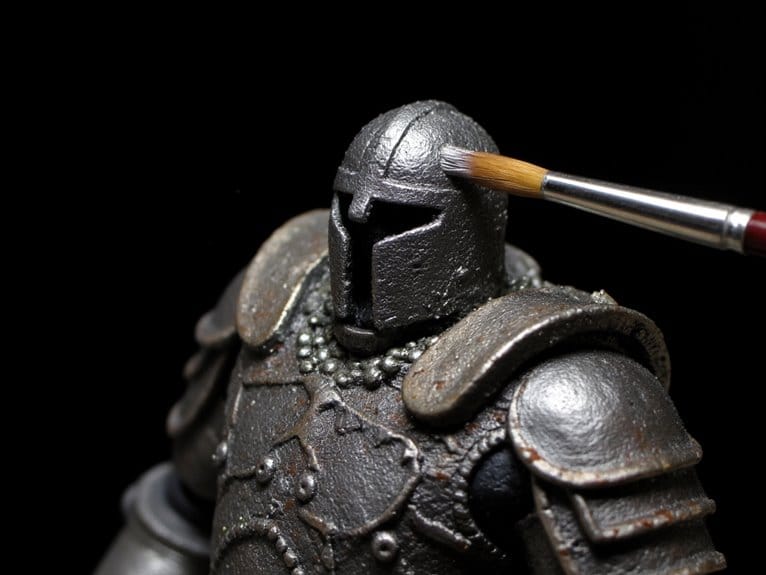We are supported by our audience. When you purchase through links on our site, we may earn an affiliate commission, at no extra cost for you. Learn more. Last update on 2nd July 2025 / Images from Amazon Product Advertising API.
Enter the world of glazing with me as I uncover the secrets to achieving the ultimate glaze that will mesmerize and delight. Understanding the intricate dance of glass-formers, fluxes, and mineral oxides is key to creating a smooth, glossy finish brimming with hues. Mastering application techniques using brushes, embracing consistency in coat thickness, and finessing the firing process are pivotal steps. Let’s dive deeper into the art of glazing for a transformative journey into the world of ceramics.
Understanding Glaze Composition
In my journey, understanding the intricate composition of glaze is like discovering the secrets to creating vibrant and durable works of art. The magic of ceramic glaze lies in its carefully balanced blend of ingredients. Glass-formers such as silica play an essential role, as they are the primary components that transform into glass when exposed to high temperatures in the kiln. These glass-formers give the glaze its smooth and glossy finish, providing the foundation for the desired aesthetic of the piece.
Moreover, fluxes are vital components that work hand in hand with glass-formers. Fluxes help lower the melting point of the glaze, allowing it to bond effectively with the surfaces. Stabilizers like aluminum oxide further enhance this bond, ensuring the longevity and durability of the finished piece. By understanding how these elements interact within the glaze composition, artists can achieve not only visually stunning results but also functional pieces that can withstand the test of time.
Additionally, mineral oxides are incorporated into the mix to add color variations to the glaze. These oxides offer a wide palette of hues, allowing artists to express their creativity and bring their artistic vision to life. Mastering the intricacies of glaze composition is the cornerstone, enabling artists to achieve both the aesthetic appeal and functional excellence they desire in their creations.
Mastering Glaze Application Techniques
Exploring the complex world of craftsmanship, mastering glaze application techniques is the key to elevating your creations from ordinary to extraordinary. To achieve the perfect glaze application, consider the following essential tips:
- Use the Right Tools: Opt for a brush when applying glaze to guarantee thin, even layers that prevent peeling or streaking. The brush allows for precise control over the application, resulting in a professional finish on your ceramic pieces.
- Preparation is Key: Before applying the glaze, consider bisque firing for intricate layered glazes. This process ensures stability and helps achieve the desired effects. Additionally, thoroughly clean your bisqueware to remove any dust or debris that could affect the smoothness of the glaze.
- Handle with Care: Avoid sharp points on your pieces before glazing to prevent glaze pooling or uneven coverage. Additionally, ensure your hands are clean when handling to prevent contamination and guarantee a clean glaze application.
Mastering these glazing techniques will enhance your understanding of glaze application, leading to exceptional results on your ceramic creations. Remember, attention to detail and proper execution during the glazing process are vital for achieving stunning glaze.
Ensuring Consistency in Glaze Coats
To maintain uniform color and texture on pieces, achieving consistency in glaze coats is essential. When it comes to glazing, the key lies in ensuring each coat is applied with precision. Consistency not only impacts the visual appeal but also plays a vital role in the firing process. By applying glaze coats of the same thickness, you set the foundation for even firing results, preventing patchy or uneven coverage on the ceramic surface.
One essential tool for maintaining consistency is a hydrometer. This device allows you to measure the density of the glaze, ensuring each application has the same composition. Additionally, practicing on test tiles can help perfect your technique. These tiles serve as a canvas for experimentation, allowing you to adjust your application method until you achieve the desired results.
When applying the glaze, pay close attention to the texture and flow. A steady hand and a well-practiced technique can make all the difference. Remember, consistency is not just about the thickness of the glaze but also about how it interacts with the surface. By mastering this aspect of glazing, you pave the way for stunning pieces that exhibit uniform color, texture, and firing results.
Achieving Desired Finish With Glaze
Experimenting with various glaze application methods like dipping, pouring, and brushing can lead to achieving the desired finish on pieces. When it comes to glazing, the application method plays an important role in determining the final look of your piece. Here are some essential steps to help you achieve the desired finish with glaze:
- Understanding Firing Temperatures: Firing temperatures have a significant impact on how glazes interact and the effects they produce. It’s vital to comprehend the behavior of different glazes at varying temperatures and adjust the firing process accordingly to achieve the ultimate result.
- Thorough Cleaning of Bisqueware: Before applying any glaze, make sure that your bisqueware is cleaned meticulously. Any dust or residue left on the surface can affect the adhesion of the glaze and lead to an uneven finish. A smooth and clean base is crucial for a successful glazing process.
- Layering and Applying Multiple Coats: To add depth and complexity to your piece, consider layering different glazes or applying multiple coats. This technique can create unique color variations and textures, enhancing the overall appearance of the finished piece.


